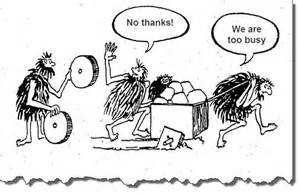
If you’re a talent decision maker, you probably have a love / hate relationship with your job. You might feel like you’ve been given the keys to a powerful but very temperamental car. The job is interesting and multi-faceted, but there’s also simply too much work, and something can go wrong at any moment. And so you triage your demands into usual categories: must do now, must do this week, and “get around to it” (which never seems to come). Nevertheless, the car keeps managing to roll forward — until it doesn’t. Why?
Unfortunately, the engine of talent management does need regular maintenance, but that effort typically falls into the “get around to it” category. There is no check-engine light to help move it up the priority list. Or is there? Think about symptoms of talent dysfunction — not the usual headaches of a tough performance month, technical issues or demands from the business — these will always be possibilities. Lasting problems occur when the talent organization is unable to navigate the issues or see ahead.
If a reactive mode of operation has finally overtaken your talent management function, it’s time to check the engine. The good news is that you can break out of the cycle of fire-fighting and once again provide forward-looking strategic value. But the problem won’t fix itself. The solution begins with a conscious and dedicated look at the whole picture of your talent management organization and activities. Often the perceived issues are symptoms of other connected causes.
A holistic view can help you identify the real issues, and while the connections can seem complex, the basics are not. Very simply, tuning up your talent management function and keeping it running requires a regular periodic check of three areas: processes, technology and organization.
-
Processes – Many variables have an impact on talent management, so constant vigilance is needed to make sure that your organization is keeping up with the times. You may not need to adopt leading edge practices, but you should review the needs and goals of your customers and your ability to deliver to them on a regular basis. Processes may need to be tweaked from time to time to work with the skills of the current talent management group or to meet a specific need. Sometimes a significant update may be needed to ensure success within rapidly changing organizations. If everyone understands that process reviews will occur and changes may be made on a regular basis, the change management may be less significant. Don’t forget to include any downstream technology impacts of process changes.
- Technology – Just because you hear complaints from users of your technology doesn’t mean that you need a major overhaul. Sometimes a few adjustments or new integrations might make the difference between loving and loathing. It is easy to put technology on the back burner once an implementation has been completed, but look to have regular check-ups to confirm that the technology continues to meet your organization’s needs.
-
Organization – This area can be intimidating, but sometimes the fix requires that an entire organization is re-designed. This may come in response to adjusted business goals or due to pressure to meet a business need. Ensuring a thoughtful approach is taken to any significant organizational change in critical. The change management can be significant and mishandling this opportunity can cause larger problems. In this area, as much if not more than the others, an outside-in perspective can be the critical link to making it work.
As we all know, objectivity and expertise have their value when it comes to checking the engine. Of course I would say this, because providing that perspective is my job as a consultant. Based on that experience, however, I can say that objectivity is tremendously important for identifying needs, finding solutions that may be hidden, and helping with change management. Understanding this and assessing the needs early can make the difference between simple fixes and a major overhaul. It’s best not to wait for the issues to fix themselves.


